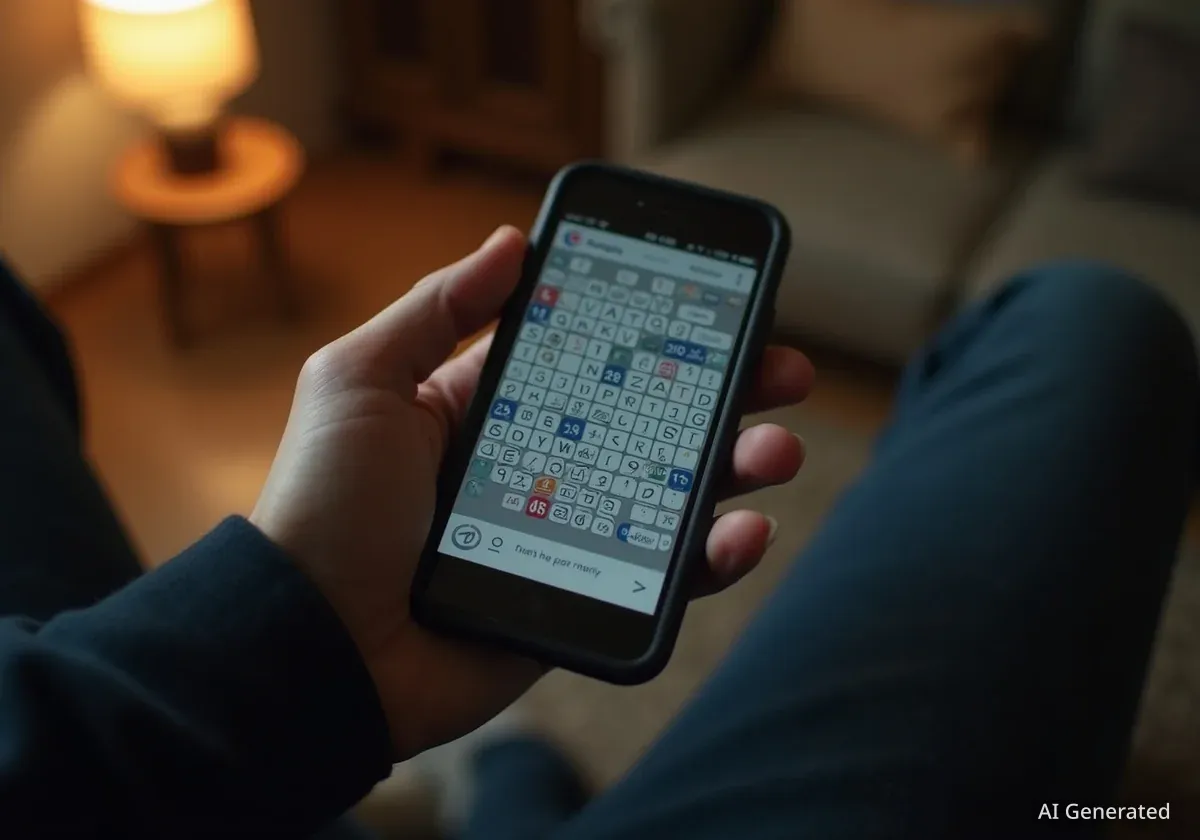The New York Times continues to expand its popular collection of daily puzzles with Pips, a logic game that challenges players to place dominoes on a grid according to specific rules. This guide provides a detailed walkthrough for the puzzle released on Friday, October 10, including solutions for all difficulty levels.
Pips requires a combination of numerical reasoning and spatial awareness, as players must use a limited set of dominoes to satisfy various conditions within colored regions of a grid. The game has quickly found a dedicated audience among fans of other NYT offerings like Wordle and Connections.
Key Takeaways
- Pips is a daily logic puzzle from The New York Times where players place dominoes on a grid.
- Each colored section of the grid has a specific condition that must be met, such as sums, inequalities, or matching values.
- The October 10 Hard puzzle features a grid shaped like the word "NO" and requires careful strategic placement.
- Key starting points involve identifying highly constrained areas, such as sections requiring a large sum or an exact number.
Understanding the Rules of Pips
Before attempting to solve the daily puzzle, it is essential to understand the core mechanics of Pips. The game presents players with a grid divided into colored zones and a specific set of dominoes to place. The goal is to fill the entire grid using every domino while ensuring all conditions are met.
The Core Objective
The primary goal in Pips is to use logic to place every available domino onto the grid. Each colored area has a symbol or number indicating a rule that the pips (dots) on the dominoes within that area must follow. Blank spaces without a color designation have no conditions and can be filled by any remaining domino half.
The conditions are communicated through simple symbols, making the game accessible once you learn the vocabulary.
Common Conditions in Pips
Players will encounter several types of rules within the colored grids. Mastering these is the first step to solving any Pips puzzle.
- Equals (=): All pips within this colored zone must have the same number. For example, if one tile has a 3, all other tiles in that zone must also be 3s.
- Not Equals (≠): All pips within this zone must have different numbers from one another.
- Greater Than (> [number]): The sum of all pips in the designated tiles must be greater than the number shown.
- Less Than (< [number]): The sum of all pips in the designated tiles must be less than the number shown.
- Exact Number ([number]): The sum of all pips in the zone must equal the exact number provided.
Players can click on a domino to rotate it, which is crucial for fitting the pieces into the grid correctly and satisfying the conditions of adjacent colored zones.
Solutions for October 10 Easy and Medium Puzzles
For players looking for the direct solutions to the easier tiers, they are provided below. The following sections will focus on a detailed walkthrough of the more complex Hard puzzle.
Easy Puzzle Solution for October 10
The Easy puzzle serves as a warm-up, introducing the basic mechanics with fewer constraints. The solution for Friday, October 10, involves straightforward placement with minimal complex logic.
Medium Puzzle Solution for October 10
The Medium puzzle increases the difficulty by introducing more overlapping conditions and a larger grid. The solution requires more foresight than the Easy level.
Walkthrough for the October 10 Hard Puzzle
The Hard puzzle for October 10 presents a grid in the shape of the word "NO." This puzzle is particularly challenging due to the large, interconnected colored zones that require careful resource management of the available domino numbers.
Step 1: Identifying the Starting Point
The most effective way to begin a complex Pips puzzle is to find the area with the most constraints. In this case, the purple zone in the top-left corner of the "N" requires a sum of 18 from three tiles. The only way to achieve this is by using three 6s.
This immediately tells us that the double-6 domino must be placed in the top two tiles of this section. The remaining 6 is placed in the third purple tile, paired with a 5 that extends into the adjacent dark blue zone, which needs a total of 10.
"The key to difficult Pips puzzles is often finding the one section that has only a single possible solution. Starting there creates a cascade of logical deductions that unravels the rest of the board."
With this initial placement, we can also address the orange and purple zones on the right side of the "N." The orange zone needs a sum of 0, so the 0/1 domino is placed there, with the 1 extending into the purple zone requiring a sum of 5. The 4/5 domino can then be used to complete the purple 5 and dark blue 10 zones.
Step 2: Solving the Large Pink Section
Next, attention should turn to the large pink zone, which forms the diagonal of the "N." This zone has an "equals" (=) condition across five tiles. We must find a number for which we have five available pips on our remaining dominoes.
A quick scan reveals that only the number 3 has enough remaining instances. We can place the 3/3 domino in the center of the pink section. The 5/3 domino can also be placed, connecting the dark blue zone (requiring a sum of 5) to the pink section.
Step 3: Moving to the "O" Grid
With the "N" partially filled, it's a good time to shift focus to the "O" on the right. The green zone in the center requires a sum of 0 across four tiles. This means all four available 0s must be placed here.
The 0/0 domino fits in the middle two tiles. The 0/4 domino can be placed extending up into the pink section of the "O," which has an "equals" condition. This immediately tells us all tiles in that pink zone must be 4s. We can then place the 4/4 domino above it. The 0/5 domino is placed extending down into the purple zone, which requires a sum of 11.
Step 4: Final Placements and Completing the Puzzle
The final steps involve resolving the remaining zones by carefully considering the dominoes left. The orange zone in the "O" needs a sum of 5. This could be made with a 1 and a 4, or a 2 and a 3. However, we know we still need two 3s to finish the pink section in the "N."
Therefore, the orange 5 must be made with a 1 and a 4. The 4/1 domino is placed, connecting the pink (=4) section with the orange 5 section. Next, the 4/3 domino connects the orange 5 with the blue "equals" section. The 3/6 domino goes below that, connecting the blue section to the purple 11 section.
Finally, we return to the "N." Place the 3/1 and 3/2 dominoes to complete the large pink "equals" section. The remaining halves of these dominoes (the 1 and the 2) fill the last empty spaces, completing the puzzle.
This puzzle was a good example of how Pips requires both local, section-by-section logic and a global overview of the dominoes you have left to use. Misusing a common number like '3' early on could make the puzzle impossible to solve later.




